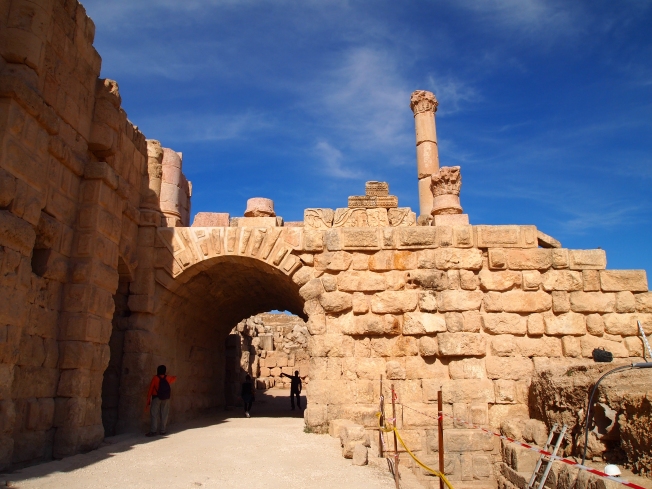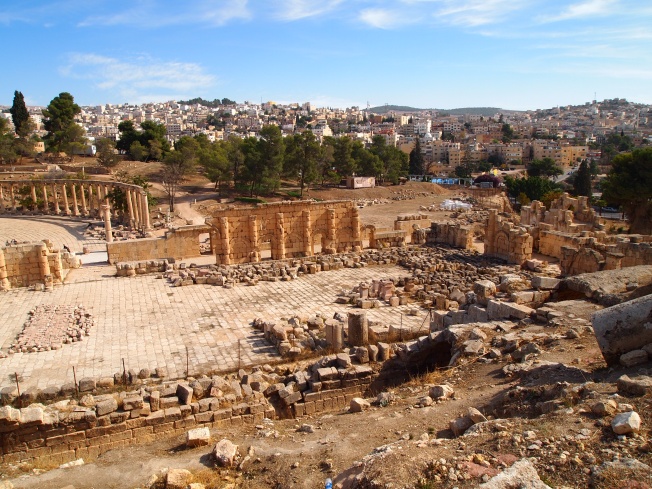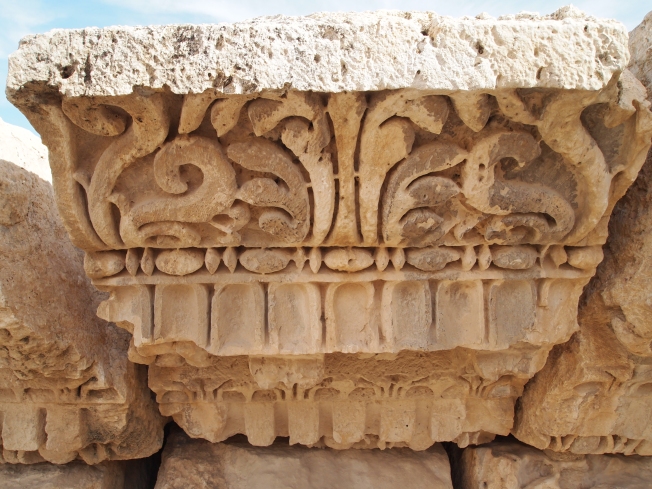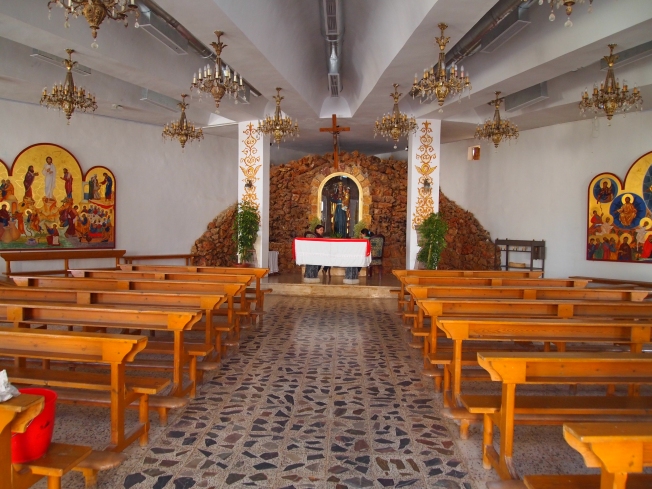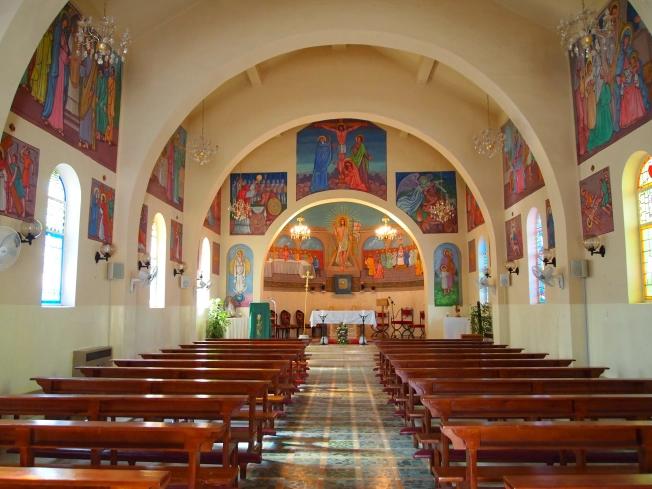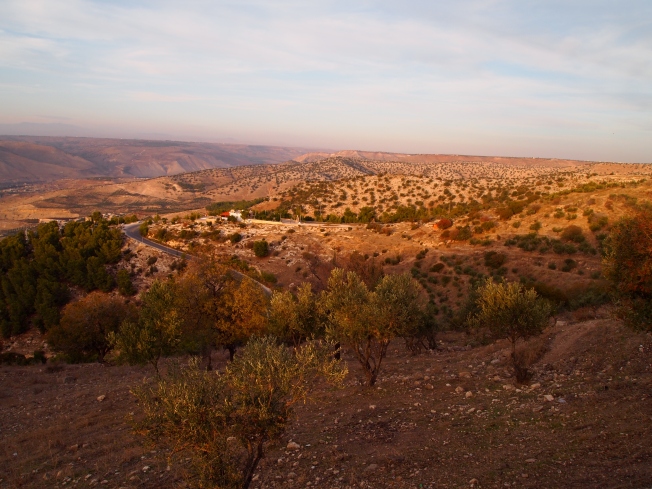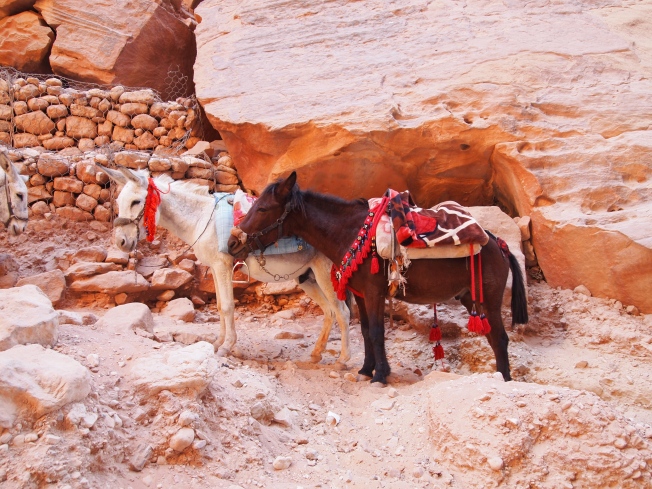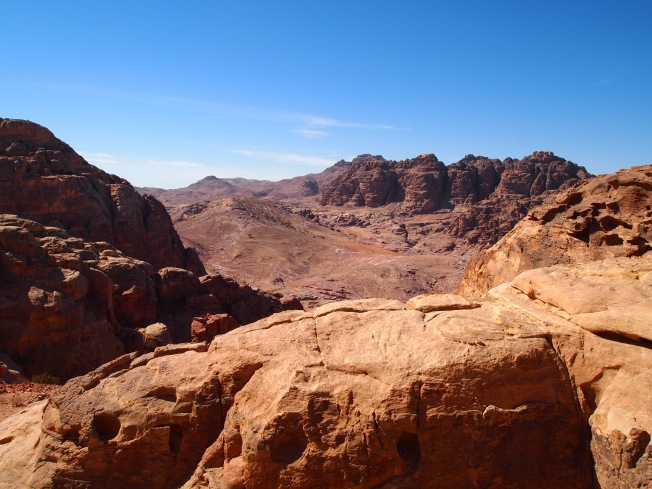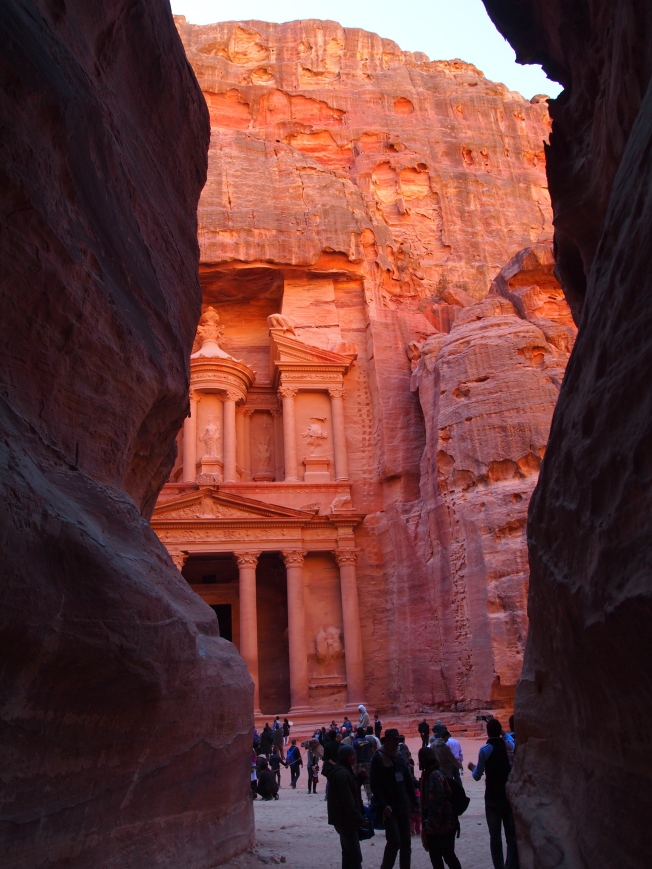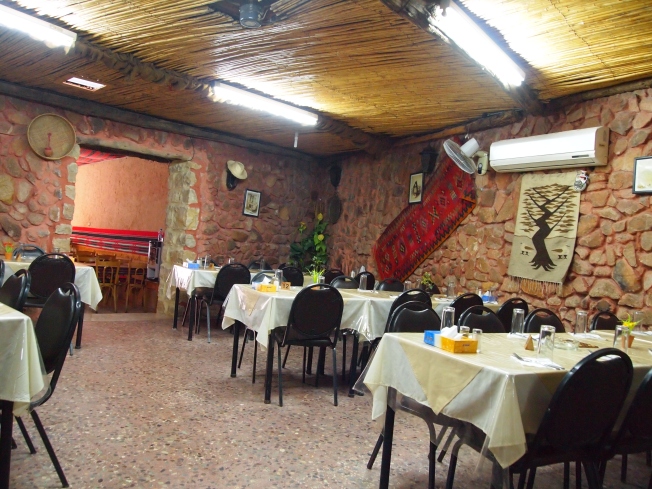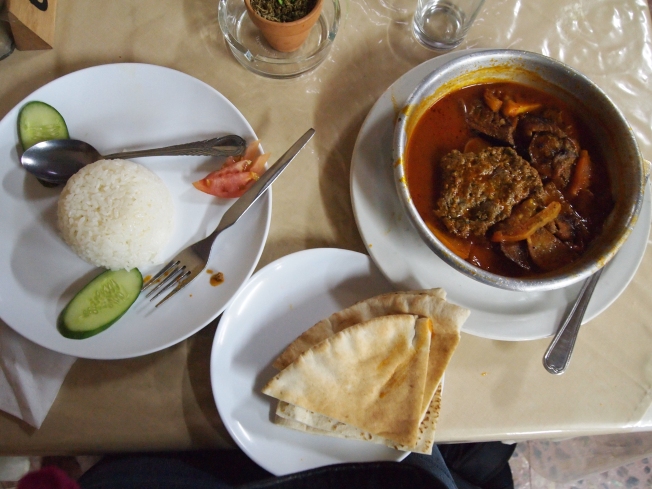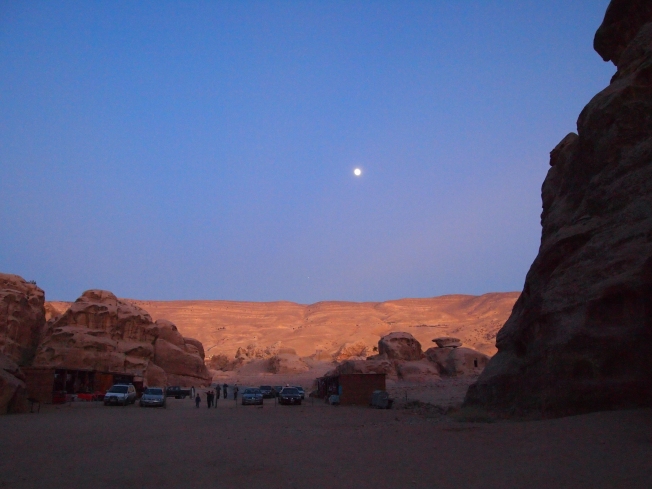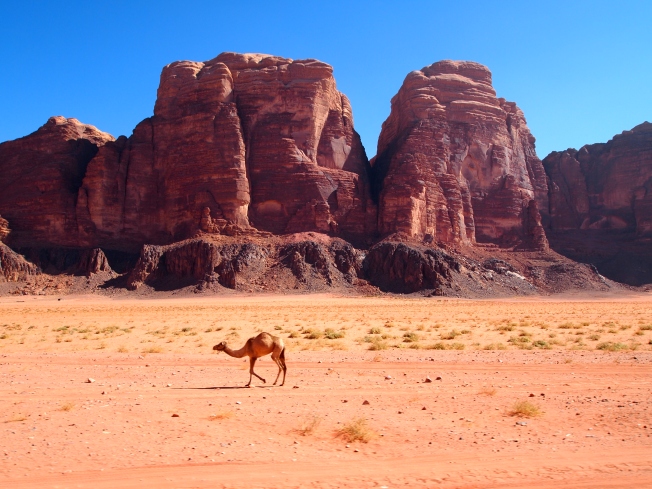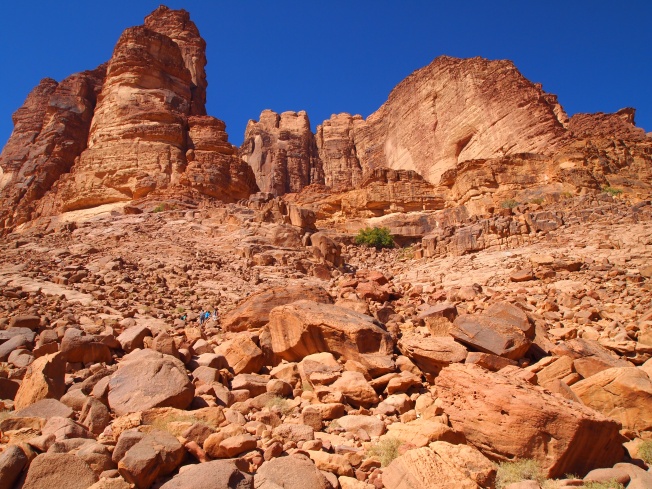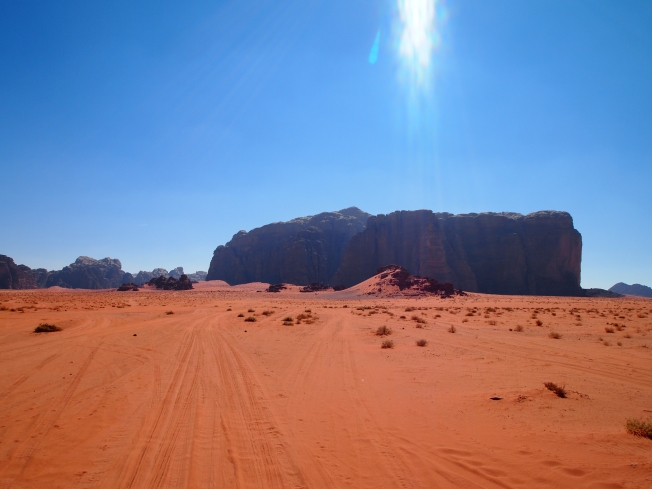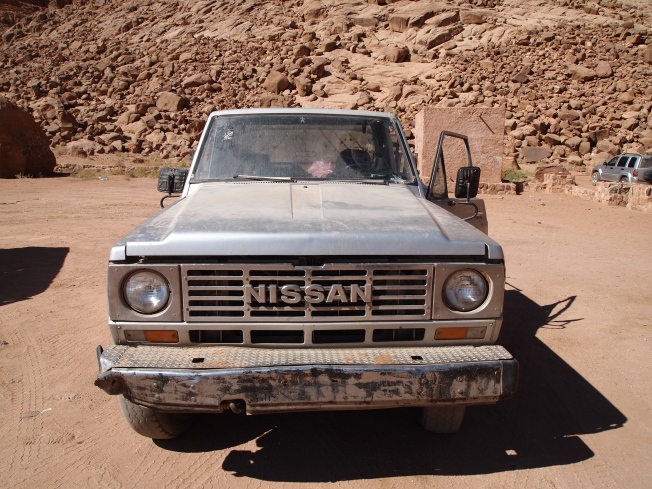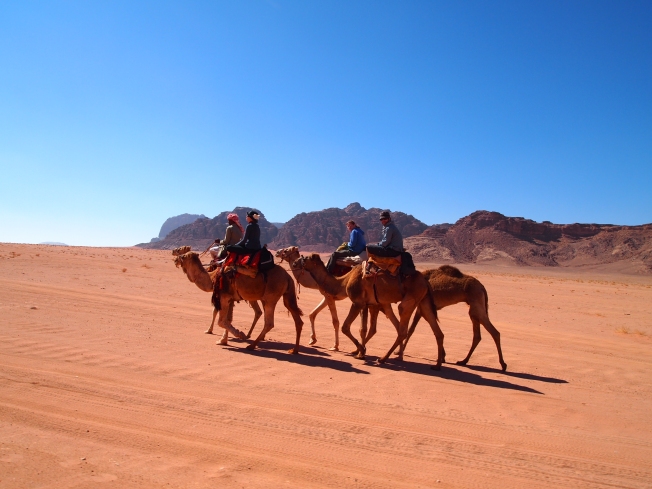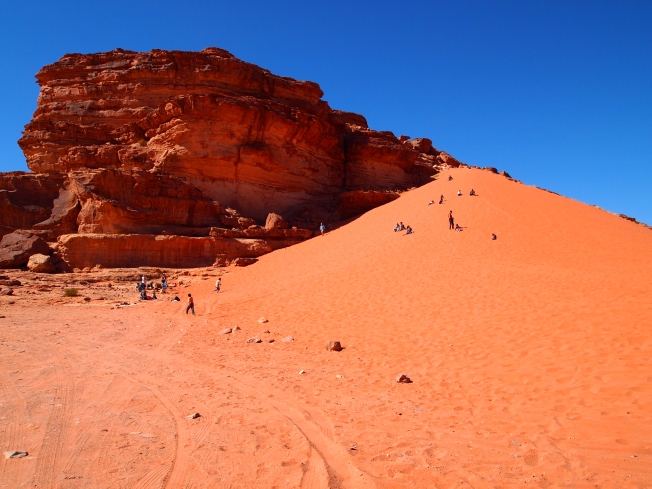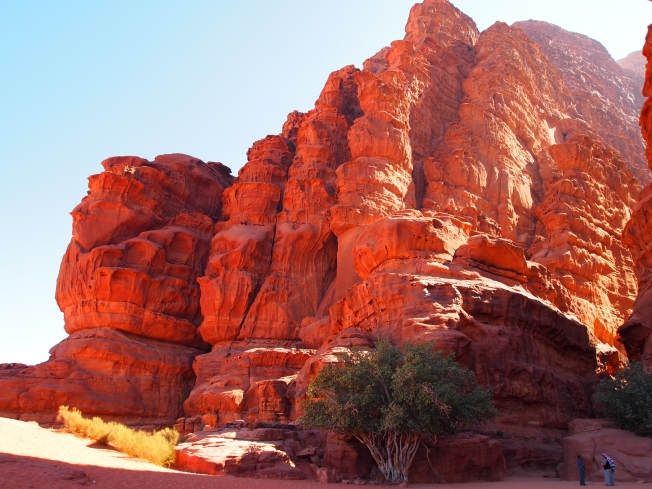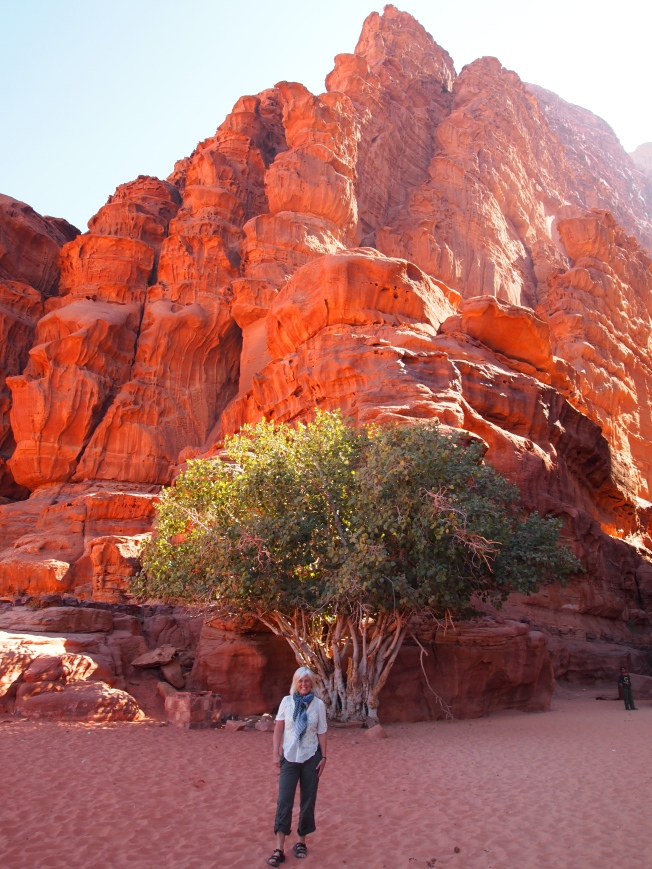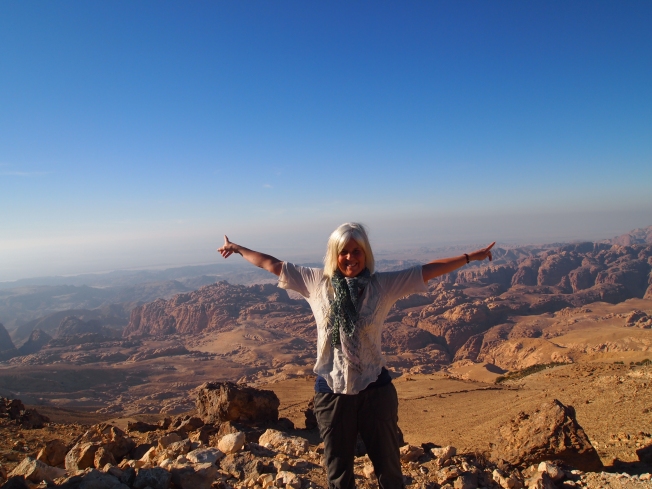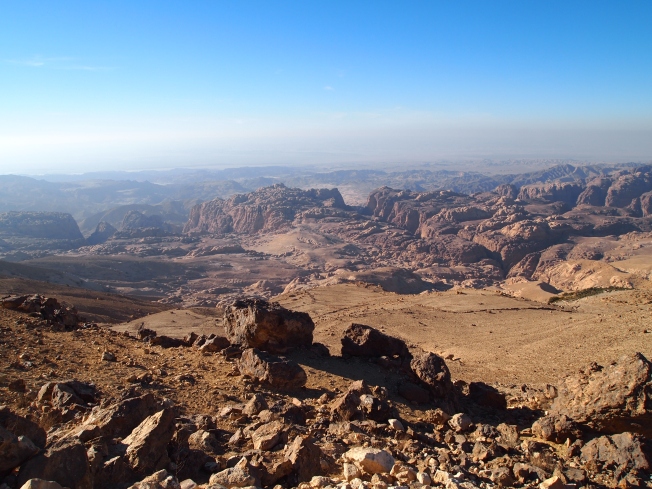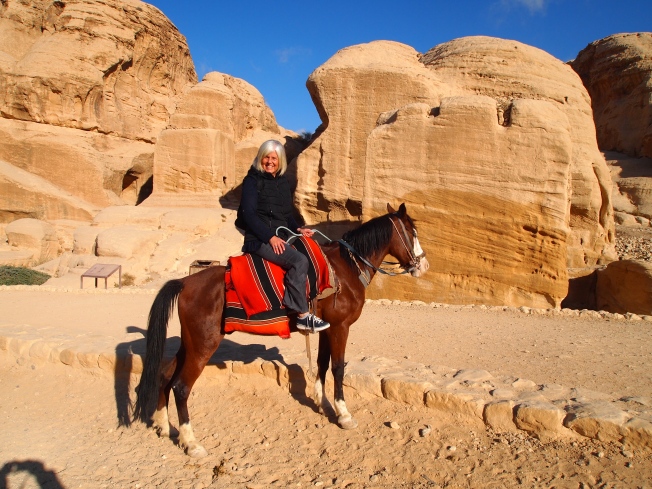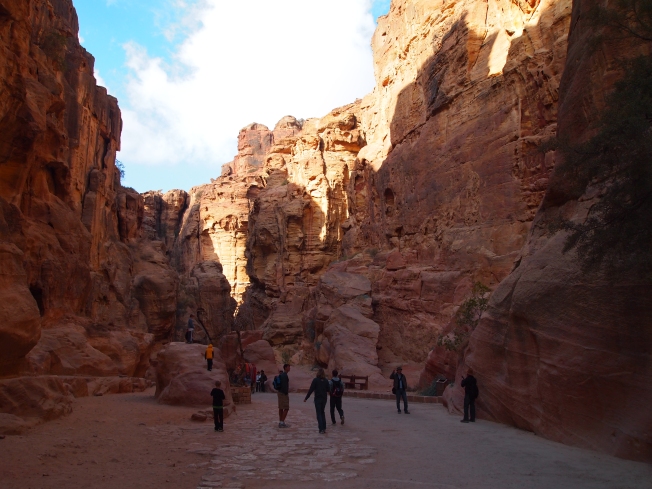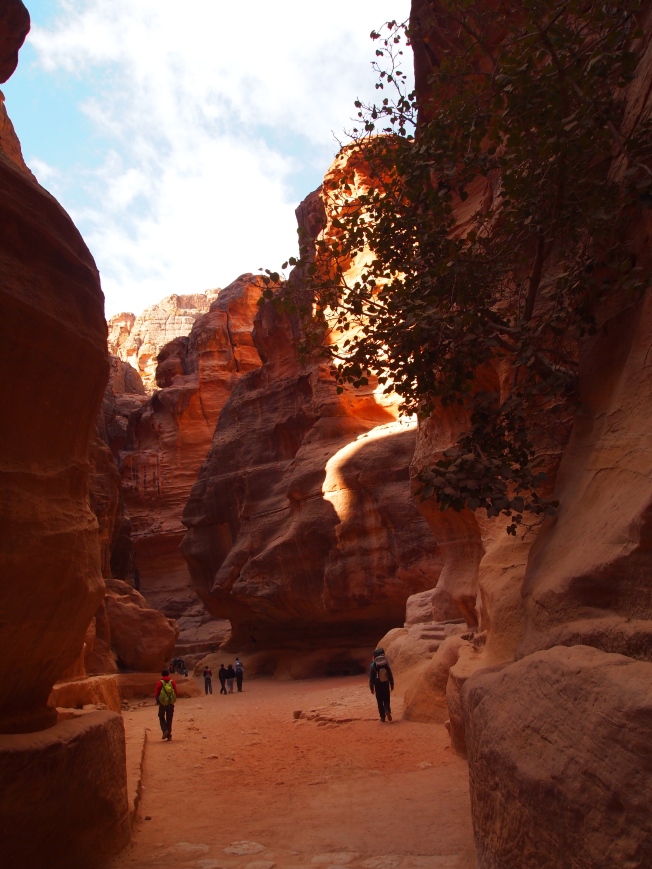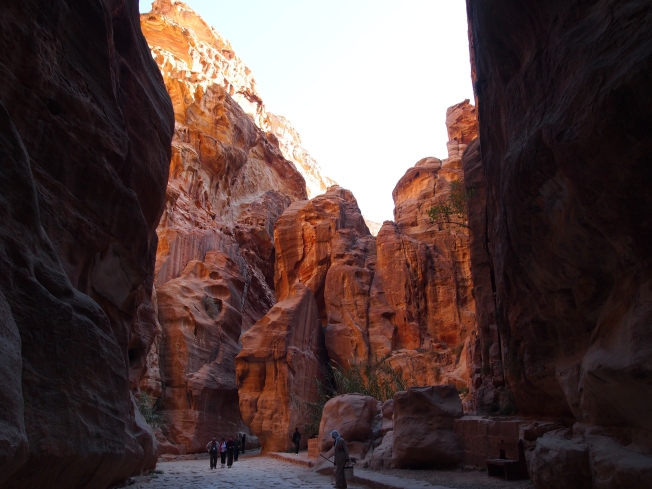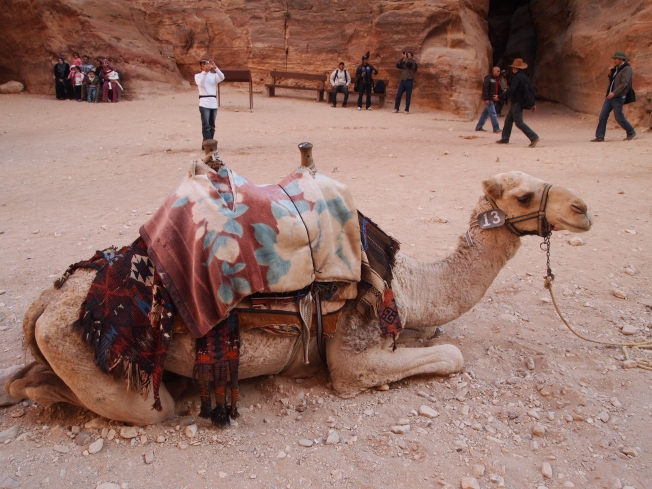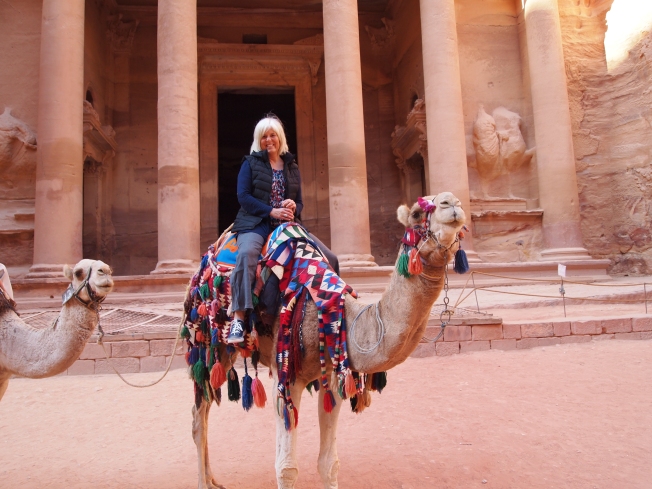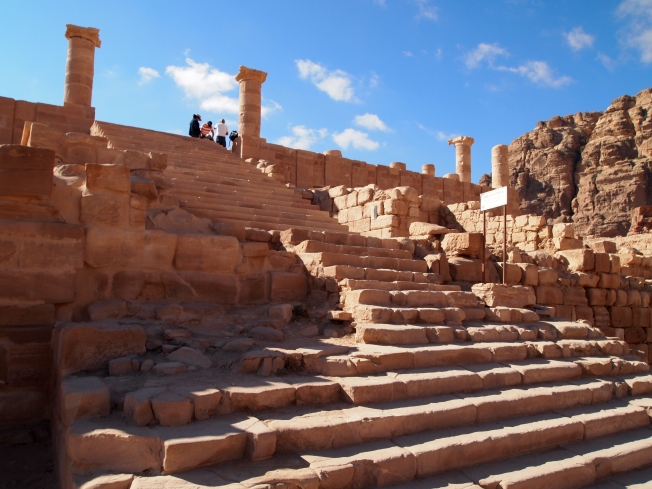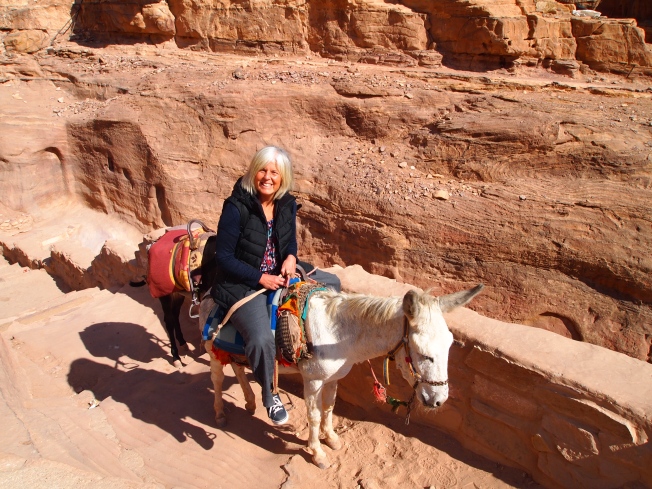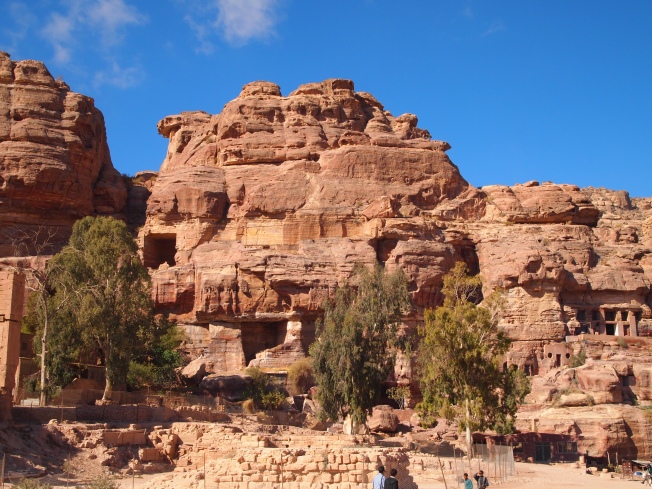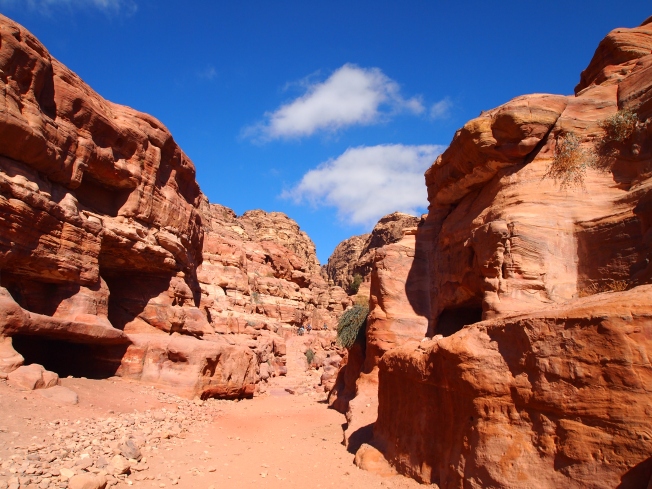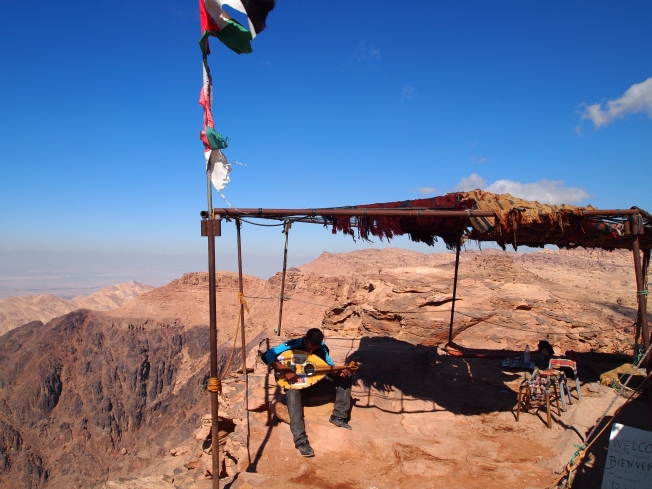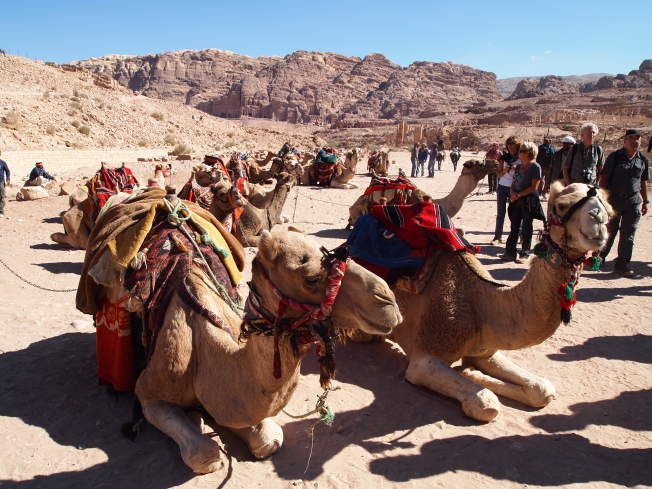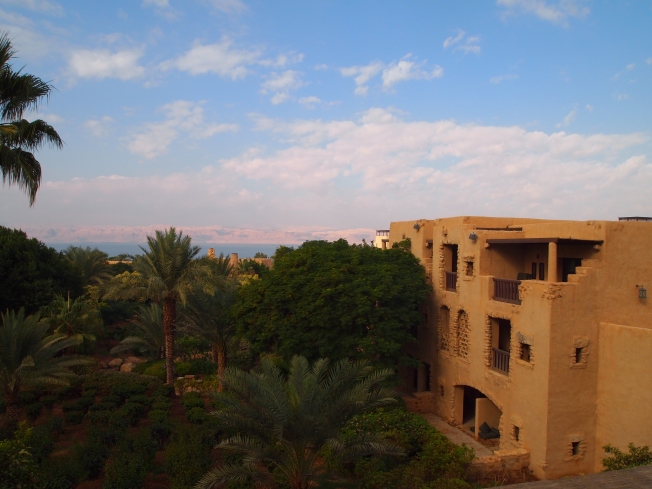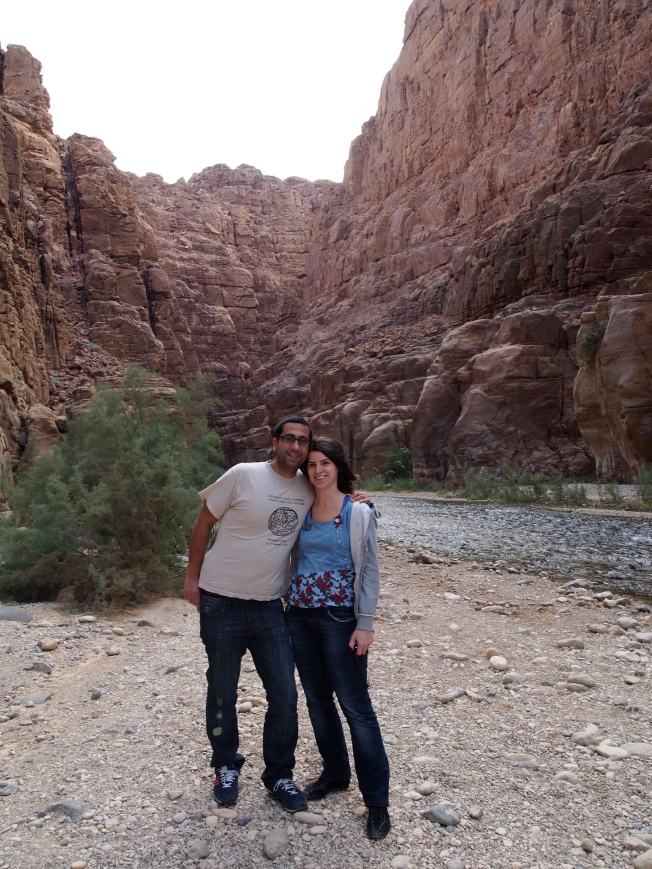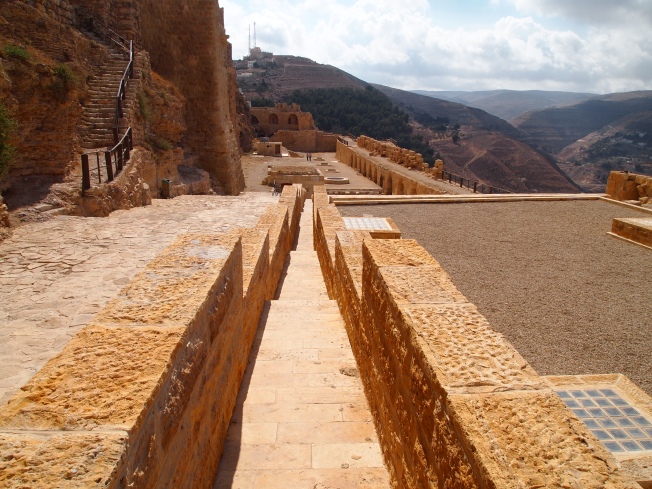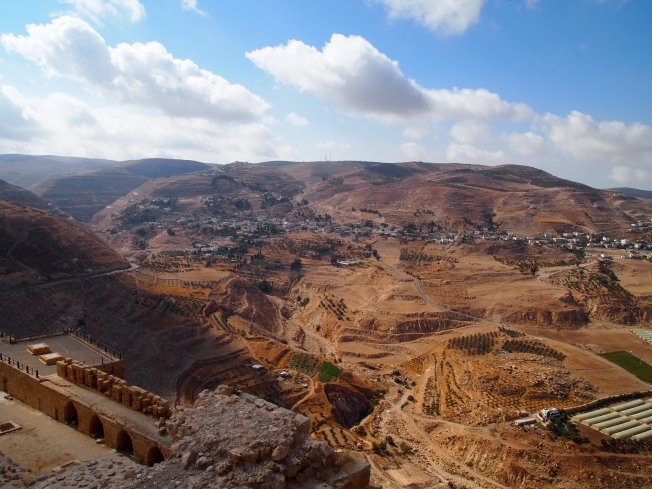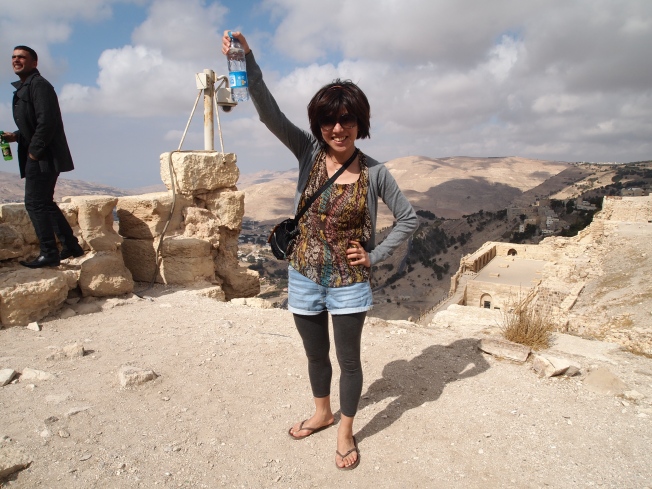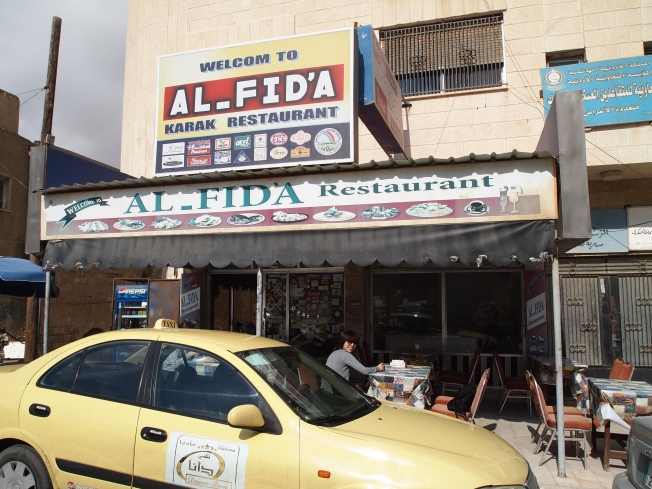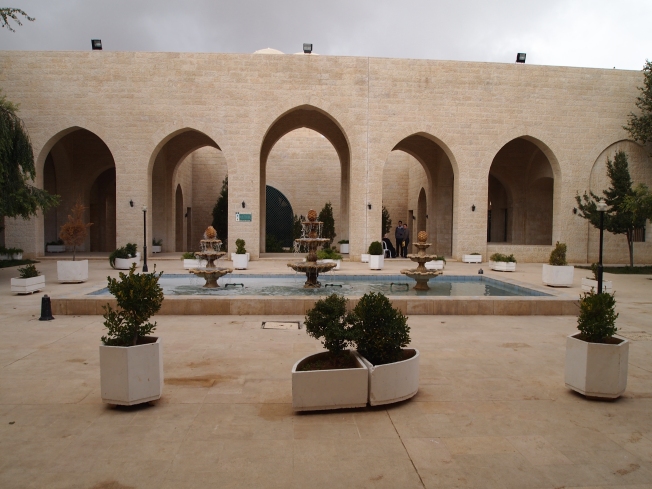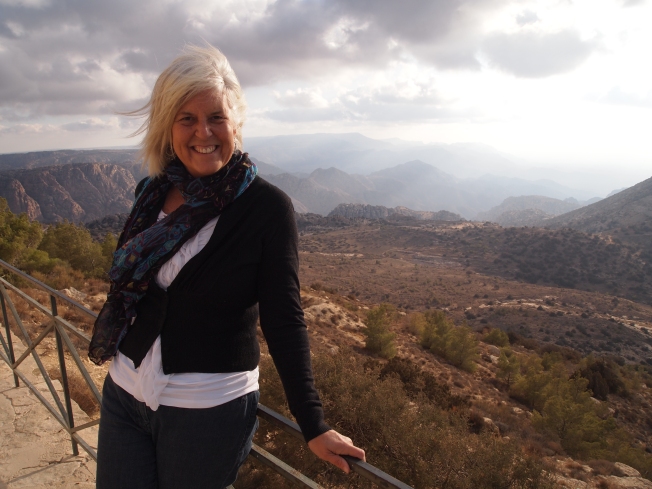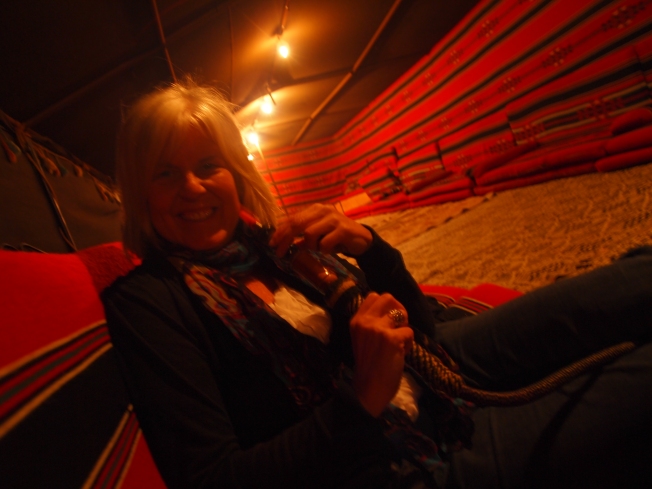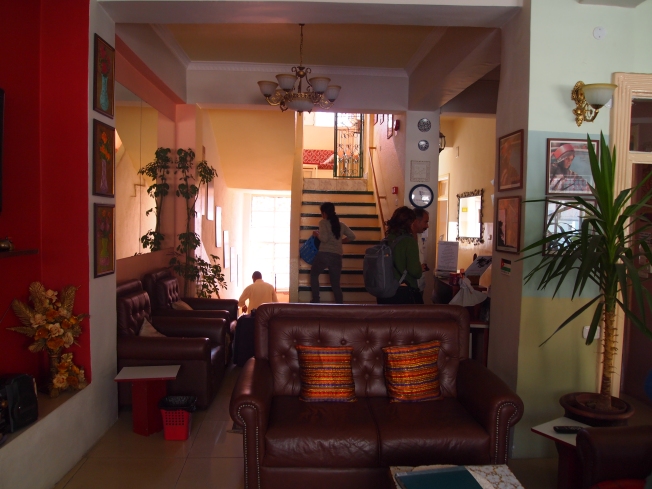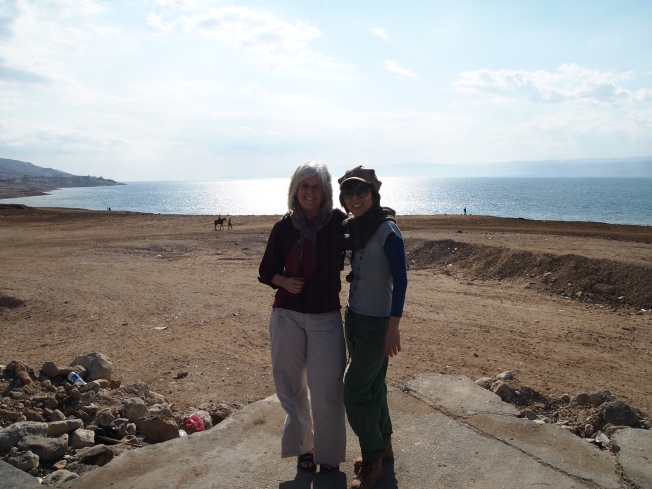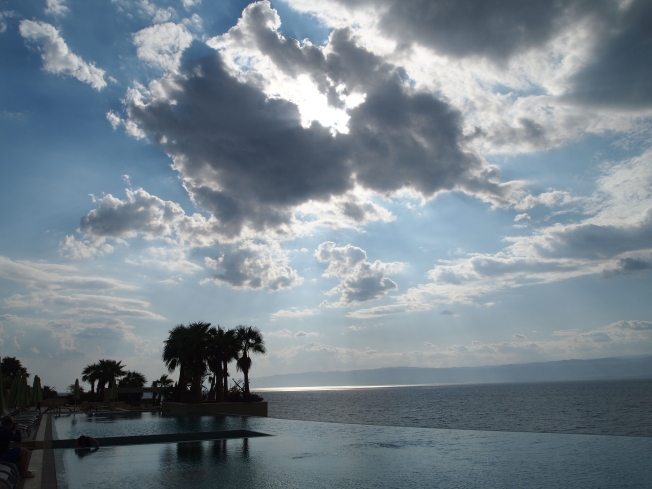“Jordan has a strange, haunting beauty and a sense of timelessness. Dotted with the ruins of empires once great, it is the last resort of yesterday in the world of tomorrow. I love every inch of it.” ~ King Hussein I
Thursday, November 10: This morning I meet my two traveling companions in the breakfast room at the Jordan Tower Hotel. Andrea and Guido, two Italian men from Genoa who are about my age, will be taking the trip with me to the north of Jordan. Guido speaks English quickly and with a thick Italian accent. He even sprinkles Italian words into the conversation randomly, so I’m never quite sure what language he’s speaking or what he’s saying. Andrea, barely speaks any English at all. No matter. We will probably go our own ways once we get to our destinations. It won’t really matter if the two of them are speaking in Italian to each other all day long. I am used to this situation from living in Korea for a year, and now in Oman.
Our driver today is Khalid, a handsome Jordanian who smokes heavily and whose teeth are quite rotten. We drive out of Amman and are in the car for about an hour, 51 km. In the car, Andrea tells me in his limited English that I am “bella,” that my face is very beautiful. Andrea is apparently a lifeguard and an artist, a photographer, and has exhibits in Genoa. Guido works at a marina keeping it maintained and cleaned. Guido tells about all his travels and his frequent trips to Mexico, where apparently he had a long-time girlfriend who got pregnant from another man. Guido apparently helped support her during and after this pregnancy, but he says he’s not “with her” now. He says he’s never been married. I’m not really sure I understand his whole story with all the convolutions and the mangled English.
Soon we arrive at Jerash, some beautifully preserved Roman ruins. Though excavations have been ongoing for 85 years, it’s estimated that 90% of the city is still unexcavated. The city was at one time known as Gerasa and once was a thriving metropolis of 15,000 people. The city rose to prominence from the time of Alexander the Great (333 BC) and reached its peak at the beginning of the 3rd century AD, when it was ranked a Colony. It began to decline as trade routes shifted.
By the middle of the 5th century AD, Christianity was the region’s major religion and churches were being built right and left. After the Sassanian invasion from Persia in 614, the Muslim conquest in 636, and a crushing earthquake in 747, Jerash’s population dwindled to about a fourth of its former size.
Immediately when we get inside of Jerash, Andrea takes off on his own and is snapping photos with his fancy camera right and left. Guido says Andrea does this a lot when they travel together. Since Andrea has taken off, Guido sticks close by me as we explore the ruins. He’s especially interested in these Roman ruins as he loves history and he’s Italian. He talks nonstop and half the time I only catch bits and pieces. But he’s boyishly enthusiastic, and I can’t help but find him charming and cute.
We pass first by the Hippodrome where chariot races took place in bygone days. Then we come to the lovely Oval Plaza (Forum), unusual because of its oval shape and huge size (90 m long and 80 m wide). Historians think the Romans hoped to gracefully link the main north-south axis with the Temple of Zeus. The paved limestone plaza is surrounded by 56 Ionic columns. The Temple of Zeus sits on the south side of the Forum, and is currently being restored. We climb around here for a while until we enter the South Theater, built to seat 5,000 spectators in the 1st century. Here some Jordanians are playing bagpipes and I get caught up in the festive mood and do a little dance. Guido and I climb around on the theater seats and take pictures.
We then take the long walk along the cardo maximus, the city’s main thoroughfare, also known as the colonnaded street. It stretches for 800 meters from the Forum to the North Gate and is still paved with the original stones. The stones were placed on the diagonal so chariots could easily negotiate them and you can still see the ruts worn by thousands of these vehicles using this road.
We walk up to the Temple of Artemis though a monumental gateway and a staircase. Up in the temple a young Jordanian guy is selling tea and we help ourselves. Guido is still sticking with me and we have totally lost sight of Andrea in the last hour. After we make our way back to the south end and the entrance, we meet Khalid who tells us that Andrea wants to cut his trip short and return to Amman by taxi. Guido shrugs and says Andrea does stuff like this every other day when they travel together. He says it’s no big deal; he’s a little persnickety and they often just go their separate ways every other day or so.
So Andrea takes off and Khalid, Guido and I continue on our way to see Our Lady of the Mount Shrine in Ajloun. Apparently, someone came upon this statue of Mary one day and the blessed lady was shedding tears of blood that was later analyzed to be human. We also see the colorfully painted church at the site.
We then head to Qala-at ar-Rabad, also known as Ajloun Castle, an Islamic military fort built in AD 1184-88 by the Arabs as protection against the Crusaders. The castle has fine views of the Jordan Valley and was one in a chain of beacons and pigeon posts that allowed messages to be transmitted from Damascus to Cairo in a single day. Mongol invaders destroyed it in 1260 and then it was rebuilt almost immediately by the Mamluks. In the 17th century, the Ottomans were stationed here, and then the locals used it. Earthquakes in 1837 and 1927 badly damaged the castle, but a slow restoration is progressing to bring the castle back to life.
During all of our travels, Guido is talking and talking and I’m really straining to understand. I’m trying to sit back and not concentrate on every word, but to get the general gist of what he’s saying. He’s talking about the history of all these places. He loves it all, with infectious enthusiasm which I find appealing.
Finally we take the long drive to Umm Qais, at the far northwest corner of Jordan. There are ruins of the ancient Roman city of Gadara and an Ottoman-era village. At the edge of a hill, we can see amazing views of the Golan Heights in Syria, the Sea of Galilee (Lake Tiberius) in Israel, the Palestinian Territories to the north, and the Jordan Valley to the south. Khalid has done an amazing job of bringing us here right as the sun is setting and it’s gorgeous really. It brings tears to my eyes to see these places that the Arabs and Israelis have been fighting over for years and years. The history here in Jordan blows me away, between the Romans, the Crusaders, the Biblical sites, and the present day struggles between Israel and Palestine.
At the top of the hill, at the Umm Qais Resthouse, we sit at a table and drink glasses of red wine and enjoy the views and a relaxing conversation. I am feeling comfortable with both Khalid and Guido, who are very laid-back guys. It is really a lovely evening and the views are enough to make it all very romantic. It’s too bad at this point that no one is actually being romantic, but we are all sharing a lovely companionship.
On the long drive back to Amman, Guido is talking again non-stop and at this time I am too tired to even try to decipher what he is saying. At one point he asks me, “How is my English?” I tell him I have a hard time sometimes understanding his accent. I don’t mention that if he slowed down, it would be better for me. I don’t know why I don’t mention this. At one point during our ride back he puts his arm around me and pulls me to him to put my head on his shoulder. He has stuck by my side all day long but he hasn’t been particularly flirtatious, so I’m surprised by this move. I think we just feel very comfortable with each other.
Back at the hotel, he asks if I’d like to have some tea in the common room. I am due to fly out at 1 a.m. Friday morning, so must be at the airport by 11 pm tonight. He’s flying out at 3 a.m., two hours after me. We sit and talk and show each other our pictures and relive the day. He asks if we could maybe consider prolonging our stay in romantic Jordan for a couple more days and I say I would love to but I have to be back at work on Saturday.
Later, after several cups of tea, he asks if I’d like to go out to the rooftop terrace for a bit. There he kisses me and at this point I’m no longer surprised. It’s really a lovely way to end our day.
At around 10:15, he walks with me down a couple of blocks to the Arab Tower Hotel, where I meet my colleagues David and Mario. We will share a taxi to the airport. When Guido and I get to the hotel, I text David to let him know I’m there, and he texts me to come up to his room. I tell Guido I’ll be back shortly and I go up to their room, where both of them are sprawled out on their beds passing the time. By the time I get back to the lobby, I find Guido buying me some bath salts from a little Dead Sea-related display. I catch him in the middle of buying this and he says, disappointed, “I wanted it to be a surprise!” He’s very cute.
David and Mario appear, our taxi driver is here, and suddenly we are all piling our suitcases into the taxi. I barely get to say goodbye to poor Guido, everything happens so fast. I give him a hug and we take off to the airport, to return back to Muscat, and back to work.



